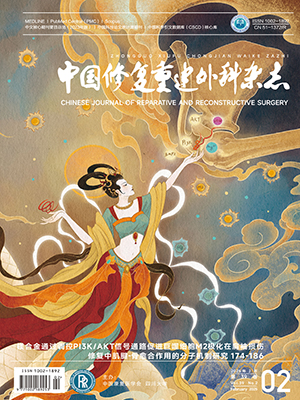| 1. |
Konan S, Duncan CP. Total hip arthroplasty in patients with neuromuscular imbalance. Bone Joint J, 2018, 100-B(1 Supple A): 17-21.
|
| 2. |
Murayama T, Ohnishi H, Mori T, et al. A novel non-invasive mechanical technique of cup and stem placement and leg length adjustment in total hip arthroplasty for dysplastic hips. Int Orthop, 2015, 39(6): 1057-1064.
|
| 3. |
Schultz K, Ewbank ML, Pandit HG. Changing practice for hip arthroplasty and its implications. Br J Nurs, 2017, 26(22): 1238-1244.
|
| 4. |
Hassan DM, Johnston GH, Dust WN, et al. Radiographic calculation of anteversion in acetabular prostheses. J Arthroplasty, 1995, 10(3): 369-372.
|
| 5. |
Barrack RL, Krempec JA, Clohisy JC, et al. Accuracy of acetabular component position in hip arthroplasty. J Bone Joint Surg (Am), 2013, 95(19): 1760-1768.
|
| 6. |
Domb BG, El Bitar YF, Sadik AY, et al. Comparison of robotic-assisted and conventional acetabular cup placement in THA: a matched-pair controlled study. Clin Orthop Relat Res, 2014, 472(1): 329-336.
|
| 7. |
Pivec R, Johnson AJ, Mears SC, et al. Hip arthroplasty. Lancet, 2012, 380(9855): 1768-1777.
|
| 8. |
Lewinnek GE, Lewis JL, Tarr R, et al. Dislocations after total hip-replacement arthroplasties. J Bone Joint Surg (Am), 1978, 60(2): 217-220.
|
| 9. |
Weeden SH, Paprosky WG, Bowling JW. The early dislocation rate in primary total hip arthroplasty following the posterior approach with posterior soft-tissue repair. J Arthroplasty, 2003, 18(6): 709-713.
|
| 10. |
Ng VY, Kean JR, Glassman AH. Limb-length discrepancy after hip arthroplasty. J Bone Joint Surg (Am), 2013, 95(15): 1426-1436.
|
| 11. |
Siebel T, Käfer W. Klinisches outcome nach roboter-assistierter versus konventionell implantierter hüftendoprothetik: Prospektive, kontrollierte untersuchung von 71 patienten. Z Orthop Ihre Grenzgeb, 2005, 143(4): 391-398.
|
| 12. |
Bukowski BR, Anderson P, Khlopas A, et al. Improved functional outcomes with robotic compared with manual total hip arthroplasty. Surg Technol Int, 2016, 29: 303-308.
|
| 13. |
Bargar WL, Parise CA, Hankins A, et al. Fourteen year follow-up of randomized clinical trials of active robotic-assisted total hip arthroplasty. J Arthroplasty, 2018, 33(3): 810-814.
|
| 14. |
Honl M, Dierk O, Gauck C, et al. Comparison of robotic-assisted and manual implantation of a primary total hip replacement. A prospective study. J Bone Joint Surg (Am), 2003, 85(8): 1470-1478.
|
| 15. |
Zawadsky MW, Paulus MC, Murray PJ, et al. Early outcome comparison between the direct anterior approach and the mini-incision posterior approach for primary total hip arthroplasty: 150 consecutive cases. J Arthroplasty, 2014, 29(6): 1256-1260.
|
| 16. |
Redmond JM, Gupta A, Hammarstedt JE, et al. The learning curve associated with robotic-assisted total hip arthroplasty. J Arthroplasty, 2015, 30(1): 50-54.
|
| 17. |
Kamara E, Robinson J, Bas MA, et al. Adoption of robotic vs fluoroscopic guidance in total hip arthroplasty: Is acetabular positioning improved in the learning curve? J Arthroplasty, 2017, 32(1): 125-130.
|




